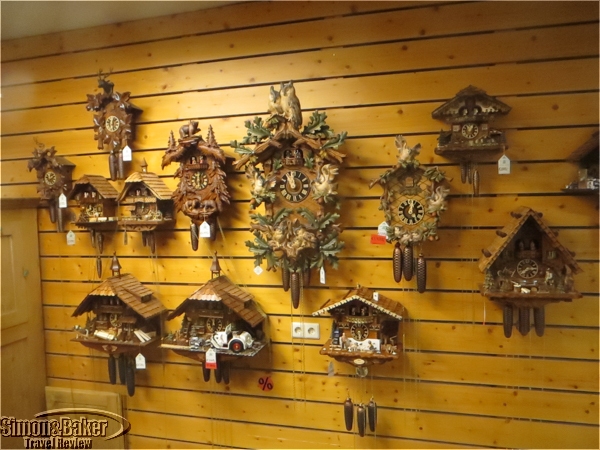
by Editor | May 15, 2017 | Accomodations, Attractions, Luxury Travel, Restaurants, Spas
By Elena del Valle
Photos by Gary Cox
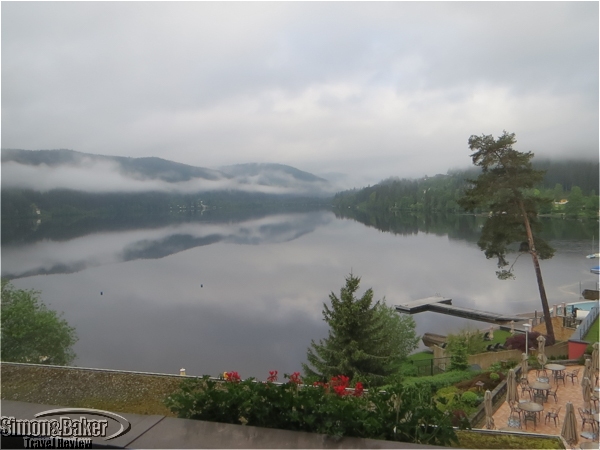
A typical dreary day by Lake Titisee during our visit
We planned our week long trip to the Black Forest Highlands in Germany months in advance with the expectation that a spring itinerary would reward us with dry and sunny weather. Instead it our visit in June 2016 was far wetter, colder and foggier than we had anticipated. It rained on and off most of the day every day during our whole stay in the area, forcing us to revise our plans entirely. In lieu of trekking on mountain tops and cable cars we spent our days in our hotel room waiting for the rain to stop or remained indoors, dining, in museums, and churches for the duration of our visit.

The clock museum featured displays of clock history
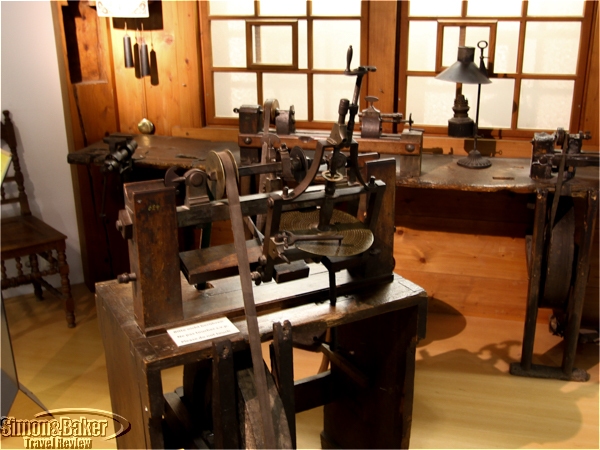
Tools used to automate the creation of the gears and wheels were featured
We replaced nearly all our outdoor activities with indoor ones. The two lane mountain roads, slick from the rain and filled with impatient drivers, did nothing to improve the situation. In the end, we made the most of the situation, exploring as best as possible in moments of respite from the constant showers. We seldom encountered English speakers or materials in English, making it necessary for us to rely on our guide frequently to translate menus at restaurants and information sheets at attractions.
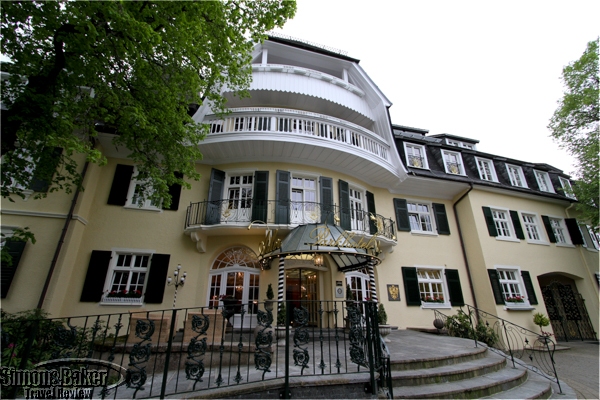
The Parkhotel Adler in Hinterzarten was a favorite for its luxury facilities and spa
From the airport we drove to the Parkhotel Adler in Hinterzarten. It was the most luxurious of the properties we visited that trip. I spent time at Hoffmann Beaute & Physiontherapie, its serene spa. Because of the cool temperatures and showers I was thankful for the property’s underground hallways that connected its facilities and provided us indoor access to the hotel spa and restaurants in adjacent buildings.
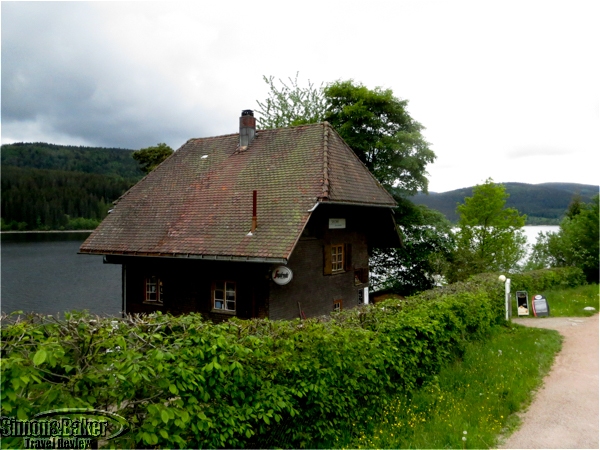
The lake fronting Seecafé in Schluchsee
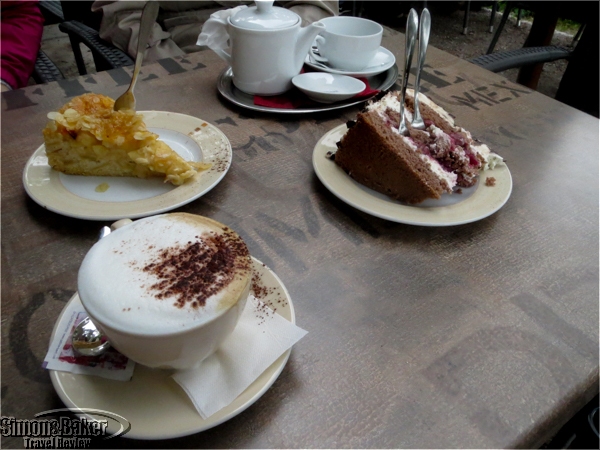
We had Black Forest cake, strudel cake and cappuccino by the lake
The first attraction we visited was the Deutsches Uhrenmuseum (German Clock Museum at Robert-Gerwig-Platz d-78120 Furtwangen, +49 7723-920 2800, deutsches-uhrenmuseum.de) northeast of Freiburg. It was a fun way to spend the morning and learn about the history of clock making in Germany.
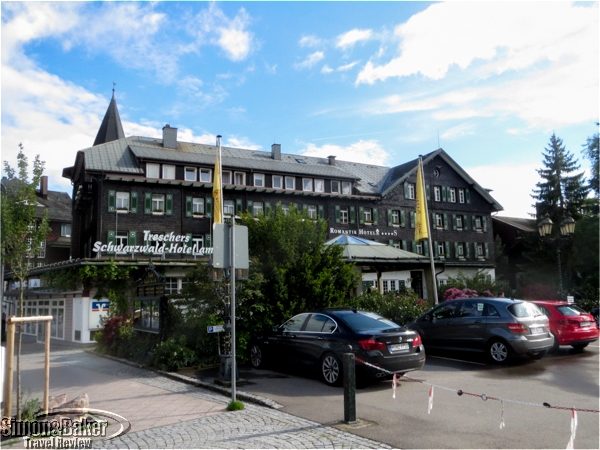
We spent the weekend at the popular Treschers Schwarzwald Romantic Hotel
One afternoon, to satisfy our sweet tooth we stopped at the Seecafé (Im Wolfsgrund 26, 79859, Schluchsee, +49 76 56/98 88 97), where we indulged in hot beverages and huge slices of regional specialties such as Black Forest chocolate cake. Despite the chilly temperatures we enjoyed the Schluchsee lakeside setting and terrace seating until a steady flow of raindrops forced us to leave.

We were delighted with our first sunny hour from the patio at Boutique-Hotel Alemannenhof
In the Lake Titisee area we stayed at two family owned properties. We spent the weekend at the popular, lake fronting Treschers Schwarzwald Romantic Hotel (see Our weekend stay at Black Forest lake front hotel with spa) with a spa in the highly touristy town of Titisee. When our rental apartment plans fell through the friendly owners and staff at the charming and lovingly built Boutique-Hotel Alemannenhof squeezed us in at the last minute without hesitation. The hotel, the Drubba Monument Shopping stores on the pedestrian street in Titisee, and the Hofgut Sternen hotel and adjacent shops were the property of the enterprising Drubba Family. It was at one of their shops where we watched a demonstration about the making of the famous cuckoo clocks. At another we caught the end of a glassblowing demonstration. Their hillside property was a favorite for its Lake Titisee views and foodie orientation.
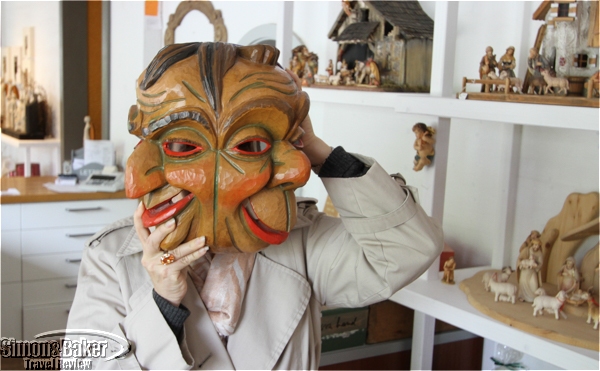
One of the hand-carved carnival masks at Holzmasken Stiegeler in Grafenhausen
In Grafenhausen, we liked the hand-carved carnival masks at Holzmasken Stiegeler (see Black Forest shop carried on with wood carved mask tradition). In Grafenhausen-Rothaus, we visited Hüsli or small house (79865 Grafenhausen-Rothaus, Am Hüsli 1 im Naturpark Südschwarzwald, + 49 77 48/212, www.hüsli-museum.de), a folk art museum dating back to 1912 when actress Helene Siegfried built a summer home from second-hand materials. We also toured the Rothaus (Badische Staatsbrauerei Rothaus AG, Rothaus 1, 79865 Grafenhausen-Rothaus, +49 7748/522-0, www.rothaus.de, info@rothaus.de) brewery museum, a modern facility with self-guided tours, where we sampled locally produced beer and bought souvenirs at the small shop.

St. Blasien Cathedral, a lovingly maintained structure 36 meters wide and 62 meters high
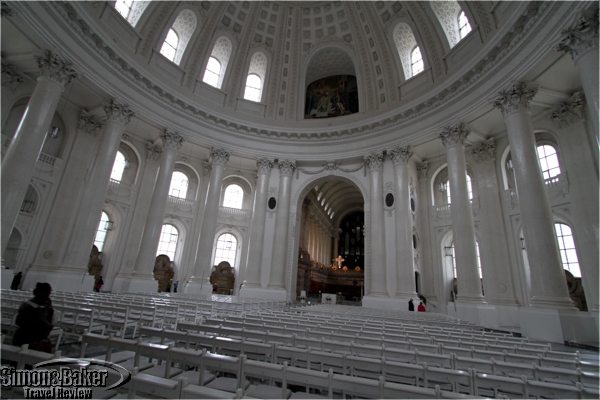
The interior of St. Blasien Cathedral

The St. Blasien Cathedral cupola
We visited several churches while in the Black Forest Highlands. Salient among them for sheer size and the determination of its builders was St. Blasien Cathedral, a pretty and lovingly maintained structure 36 meters wide and 62 meters high. The early classical cupola is the largest of its kind north of the Alps.
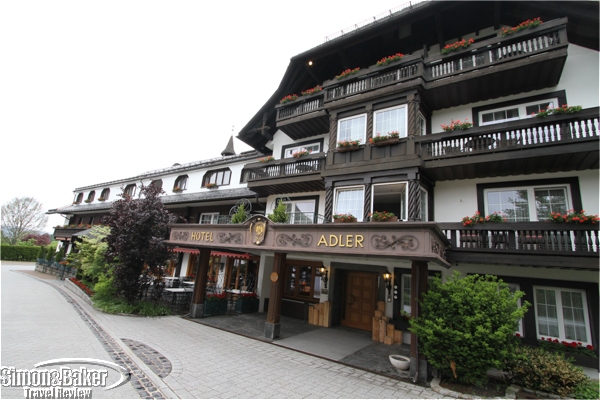
Our final nights were at the Hotel Adler in Häusern
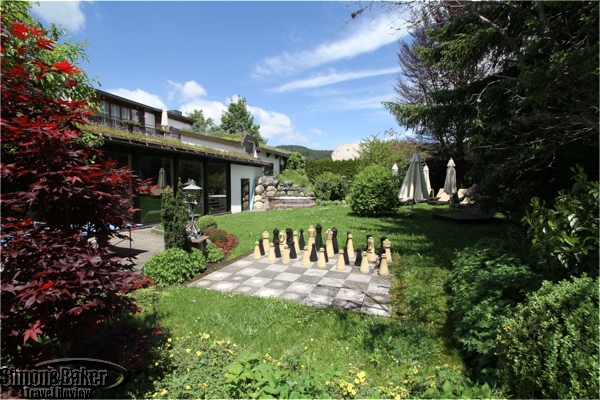
The sun made an appearance on our last afternoon in the Black Forest
Our final nights were at the Hotel Adler in Häusern, where we dined at the hotel’s gourmet restaurant (see Dinner at Black Forest Highlands gourmet restaurant). We would recommend the Black Forest Highlands to friends who speak German or don’t mind seeking translations, like moderate luxury in a heavily touristy area with authentic regional cuisine, enjoy mountainous landscapes and the outdoors, and are able to change plans in a hurry if the weather turns ugly.
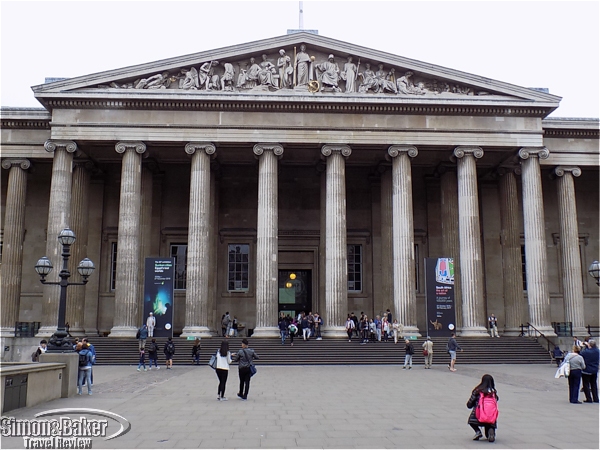
by Editor | May 1, 2017 | Attractions, Luxury Travel
Article and photos by Scott S. Smith

London’s vast British Museum is the oldest public museum in the world
My wife and I thought we could run through a refresher on London’s British Museum when we visited for the second time in September 2016 (Great Russell Street, +44 020 7323 8000, www.britishmuseum.org, info@britishmuseum.org). We had taken a full two days 35 years before when we were last there, but figured four hours would be enough to hit the highlights. Relying on the invaluable DK Eyewitness Travel Guides London, with additional tips from Rick Steves’ Pocket London and checking the website, we boiled down the list to just the must-see-agains and some we had overlooked or which had not been on display (we belatedly discovered that only one percent of its 50,000 items are exhibited at any one time). Despite the name, this is really the greatest museum in the world on the history of the ancient world, thanks to plundering by colonial officials who had the classical education to appreciate what they brought back. As if that weren’t enough, it also has artifacts up to the present day. Established in 1753 to house a private collection, the main current building was completed in 1850, and the entire complex of 94 galleries on three levels occupies a total of 2.5 miles. We recommend to our friends visiting for the first time that they take one of the highlight tours and set aside at least one full day for the museum. To avoid crowds, we will visit weekday afternoons.

A 19th century priestly mask from the Songye people in the Democratic Republic of the Congo
We found the lower floor (basement) of the British Museum was overlooked because it is primarily devoted to Africa, while the other two floors had many world-class treasures. But African art has always been a favorite of ours when we go to any major museum of world culture. The African imagination has always struck us as astonishing, perhaps unleashed by its magical view of reality. The ritual masks, costumes, and statues are always better than anything we’ve ever seen near our home in West Hollywood, California, at the Halloween street parade, which is saying something (it draws half a million participants and spectators due to the creative contributions from movie professionals). This time, we particularly liked a multi-horned headdress for ancestral ceremonies from 19th century Nigeria and some famous bronze statues from the Kingdom of Benin.
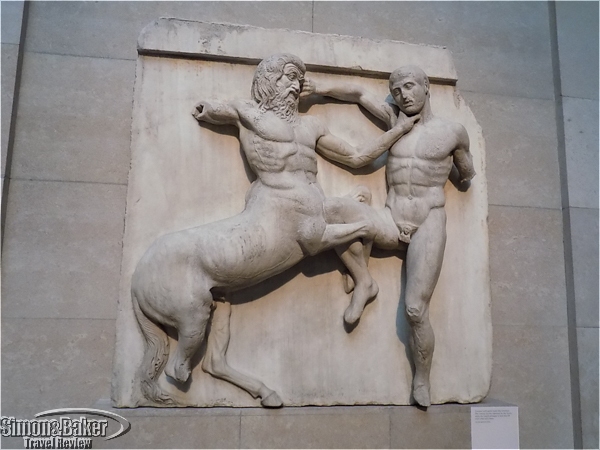
A Centaur and Lapith wrestle in a relief from the Parthenon
Back on the ground floor, we headed straight to the enormous room displaying the Elgin Marbles, décor from the Parthenon, the temple of Athena on the Acropolis in Athens, which the British brought back in 1816 and the Greeks have been trying ever since to get returned. Despite thousands of years of wear from exposure, they still showed the brilliant skills of the sculptors during the Golden Age of Greece (500-430 B.C.), the cultural supernova that led to the Renaissance and Western civilization (the best summary of their contribution is Edith Hamilton’s The Greek Way). We also saw many other gorgeous sculptures and ceramics from the Greeks and Romans in other galleries and on the upper floor.
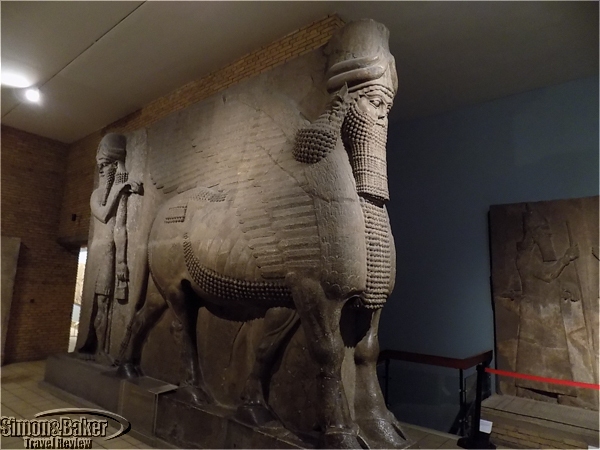
Human-headed winged bulls from the Palace of Sargon II at Khorsabad, Assyria (near Mosul, Iraq)
The ground floor also had much from the ancient Middle East, especially Assyria. There were several sets of enormous winged-bulls that guarded the palaces of Sargon II, who reigned 721-705 B.C. and according to the Bible took the northern 10 tribes of Israel into captivity (now referred to as the Ten Lost Tribes, they were said to have “gone north” after Assyria’s fall, but may have simply blended in with other peoples in the region). One famous relief depicted the royal sport of lion hunting, and there were artifacts from ancient Jericho and Islamic cultures. More from the Middle East, especially Iran, was on the upper floors, but we just breezed through it for lack of time. The collection for the Americas was confined to two modest rooms, but had some outstanding sculptures from ancient Meso-American peoples, such as the Zapotecs. As for the rest of the floor, having been to India and Japan, and having little interest in China, we skipped the Asian section.
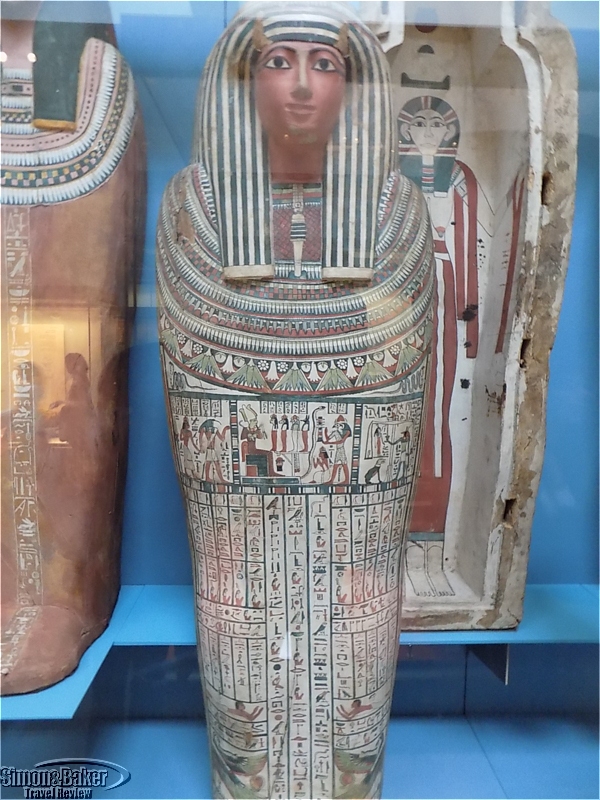
Coffin of Egyptian incense bearer Denytenanum, Temple of Amun, Thebes (9th century B.C.)
The upper floor’s Egyptian section may be the world’s best outside of the Cairo Museum (which we’ve been to). It is world famous for having the Rosetta Stone, carved into which was a trilingual inscription that enabled the French to begin to decipher the hieroglyphics. It was hard to photograph through the glass and the writing is tiny, but there was a model nearby we could touch. Another outstanding item was the enormous statue of Ramesses II, the 13th century pharaoh many believe was the one who reluctantly let the Israelite slaves leave Egypt. There were also numerous mummies and painted coffins.

Zapotec funerary urn from Mexico from about 200 B.C.
The other primary section on the upper level we were interested in was for Britain, covering as far back as 10,000 B.C. The most striking item was the 2,000-year-old Lindow Man, who was sacrificed in a ritual way, his skin preserved in a peat bog in Cheshire. The other big draw was the burial of a 7th century A.D. Anglo-Saxon king in a ship filled with treasures at Sutton Hoo, East Anglia, discovered in 1936. Among the many notable items, which revolutionized understanding of the era, were a ceremonial helmet, a shield, gold jewelry, silver bowls, and a lyre, a harp-like instrument. Now that we have been reminded of how incredible the British Museum is, we will not take another 35 years to return and will give it the time it needs to be fully appreciated in the future. There is a reason it is the top tourist destination in Britain.





























